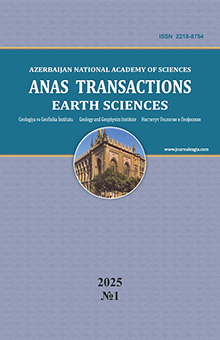№ 1,
2020
Download the article
Analysis of sedimentary thickness, volumes and geographic extent of the world sedimentary basins
Institute of Oil and Gas, Azerbaijan National Academy of Sciences 9, F.Amirov ave., Baku, AZ1000, Azerbaijan: Nazim_Abdullayev@hotmail.com
Summary
A-
A+
Paper gives a brief overview of the sedimentary cover of the Earth and summarizes volumes of sediments and mass contained in the Earth Sedimentary layer (so called stratisphere). Using publically available data author also shows unique nature of the South Caspian Basin and demonstrates number of other rapidly subsiding basins that have an attenuated crust and thick sedimentary cover. The subsidence in basins results from crustal stretching, sedimentary and tectonic loading, and changes in the thickness or density of adjacent lithosphere and allows for sediments to be deposited. Sedimentary, crustal and lithospheric thickness correlation is discussed in this paper. Most of the world’s basin volume and thicknesses vary according to the 80/20 (Pareto distribution) rule power law, where about 80% of the sediment volume has accumulated in the largest 20% of basins by volume. Lognormal correlation between basin size and thickness is observed for passive margins and extensional basins. Passive margins are about 4 km thick on average, foreland basins are about 3 km and cratonic sags are 2 km on average. South Caspian, however together with a number of other basins, is anomalous because of combination of flexural effect reducing its area and rapid Pliocene sedimentation rates. For example, more than 1.8 million cubic kilometres of net rock volume (or a solid sediment mass of 4.42*10^9 tons) have accumulated in the South Caspian basin since its inception; of which 595 thousand km3 was in Pliocene (33%) and 221 thousand km3 in Quaternary. Volume and sedimentation rates in Pliocene in SCB exceed equivalent sedimentation rates in Bengal fan – largest sedimentary sink in the world.
Keywords: sedimentary basins, South Caspian, sediment volumes, sediment thickness, stratisphere
REFERENCES
Abdullayev N.R., Kadirov F., Guliyev I.S. Subsidence history and basin-fill evolution in the South Caspian Basin from geophysical mapping, flexural backstripping, forward lithospheric modelling and gravity modelling. Geological Society, London, Special Publication, V. 427, 2015, pp. 175-196, https://doi.org/10.1144/SP427.5
Abdullayev N.R., Weber J., Aliyeva E. et al. Detrital zircon and apatite constraints on depositional ages, sedimentation rates and provenance: Pliocene Productive Series, South Caspian Basin, Azerbaijan. Basin Res., V. 30, No. 5, 2018, pp. 1-28.
Allen Ph.A., Allen J.R. Basin Analysis. Hoboken, NJ: Wiley-Blackwell, XII, 2013, 619 p.
Berry J.P., Wilkinson B.H. Paleoclimatic and tectonic control on the accumulation of North American cratonic sediment. Geol. Soc. Am. Bull., V. 106, 1994, pp. 855-865.
Laske G. A global digital map of sediment thickness. University of California San Diega, Institute of Geophysics and Planetary Physics, USA, https://igppweb.ucsd.edu/~gabi/sediment.html
Hay W.W. Pleistocene-Holocene fluxes are not the Earth’s norm. In: Hay W., Usselman T. (eds) – Material fluxes on the surface of the Earth: studies in geophysics. National Academy Press. Washington, D.C., 1994, pp. 15-27.
Khain V.E., Levin L.E., Tuliani L.I. Some physical parameters of global structure of the Earth. Geotectonics, V. 16, 1982, pp. 443-453 (in Russian).
Kunin N.Y. Distribution of sedimentary basins of Eurasia and the volume of the Earth’s sedimentosphere. Int. Geol. Rev., V. 29, No. 11, 1987, pp. 1257-1264.
Ronov A.B. Stratisphere or Earth’s sedimentary shell. Nauka. Moscow, 1993, 143 p. (in Russian).
Southam J.R., Hay W.W. Global sedimentary mass balance and sea level changes. In: Emiliani C. (ed.) – The Sea, V. 7, The Oceanic Lithosphere. Wiley-Interscience. New York, 1981, pp. 1617-1684.
DOI:
10.33677/ggianas20200100040
